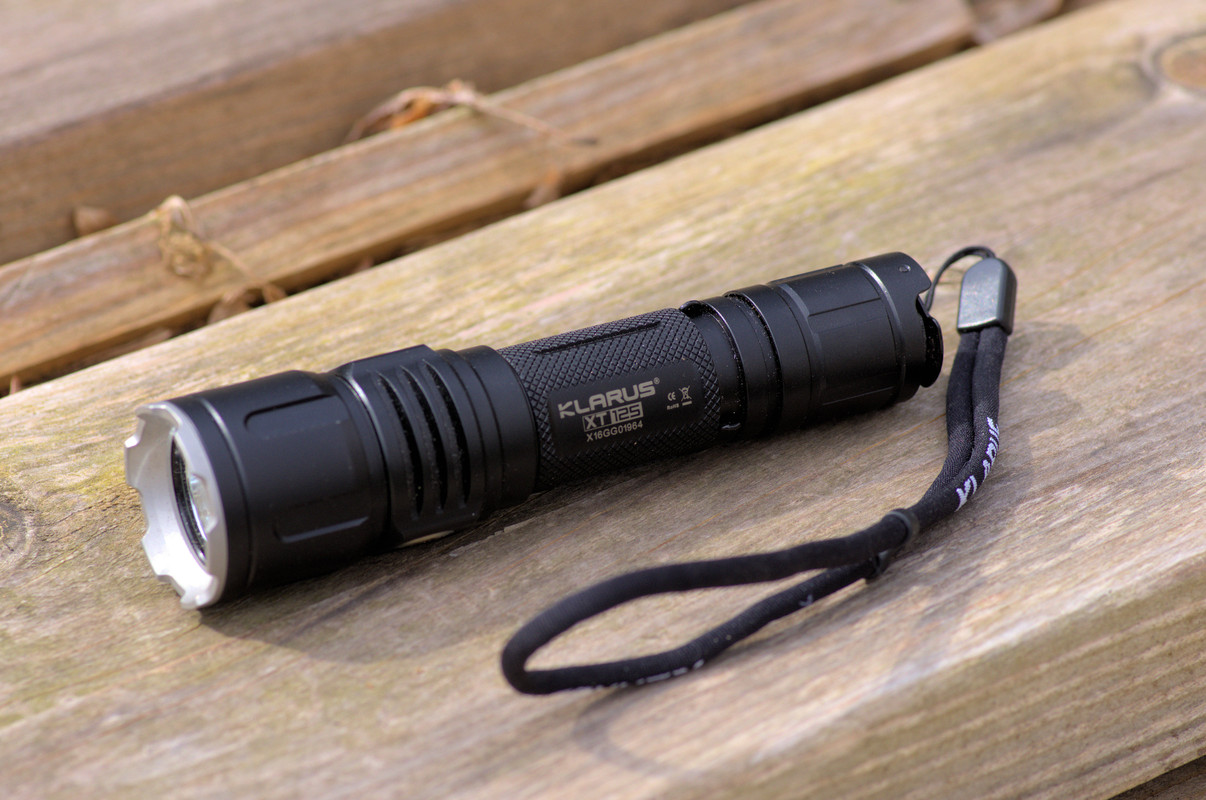Klarus XT12S
I received this flashlight from Flashlightz.com, in exchange for my evaluation of the product. I’d like to thank Flashlightz.com for their generosity.
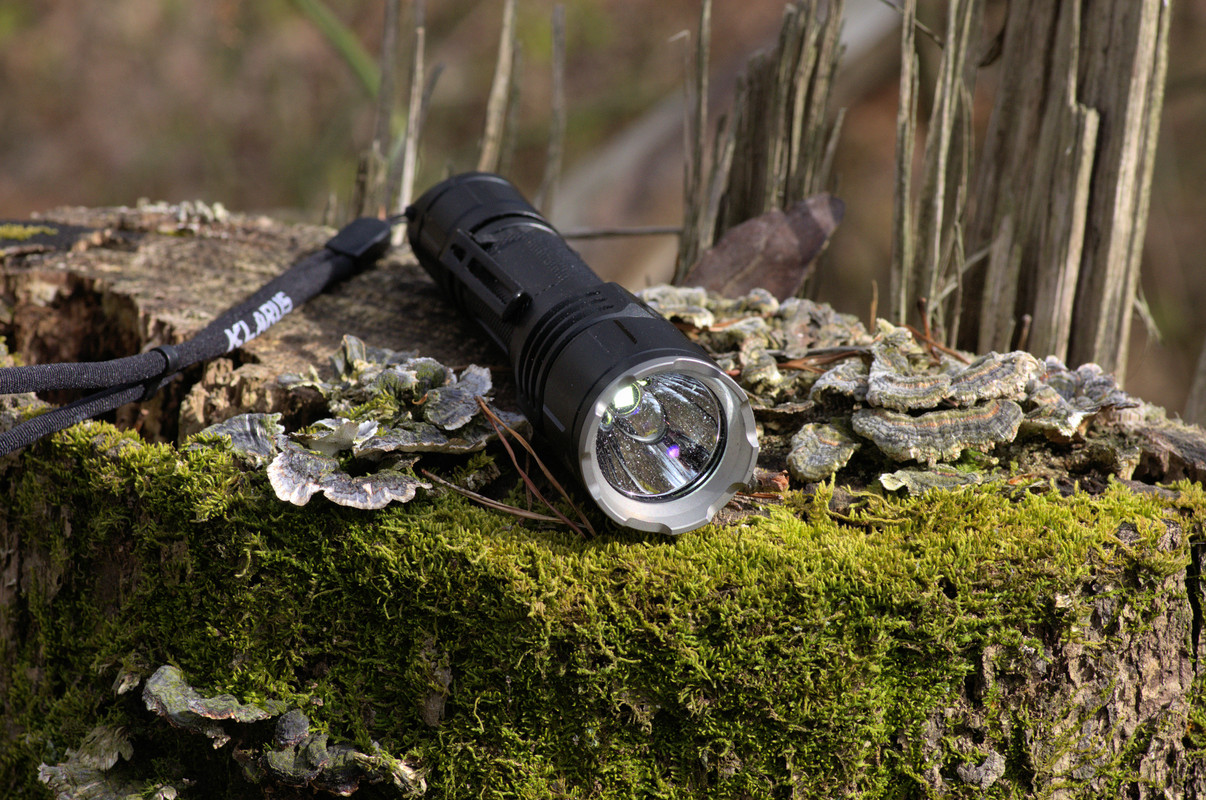
I’ve had the XT12S for about 2 months now and have had the opportunity to use it quite frequently. The retail price is listed at $69.56 (on their Amazon store) – $6.40 less than the Klarus XT12GT (bigger brother to the XT12S and a better thrower). The XT12GT is among my favorite lights – a coat-pocket sized flashlight that throws well beyond expectations.
The XT12S is a bit smaller – about 1 inch shorter – at 5.64 inches in length; not quite what I’d consider a pocket-carry EDC flashlight, but certainly small enough to make it very easy to carry all day long. It does come with a good quality holster – for those who like to carry a flashlight on their belt. The included clip is sturdy – really sturdy. Not quite to the point of being a nail-breaker, but you’ll definitely notice the resistance. The clip is removable, but not reversible. Well, let me rephrase that: the clip can be reversed, but doing so is pointless. In fact the clip itself is a bit pointless for my purposes, and has been removed (along with the cigar-grip ring).
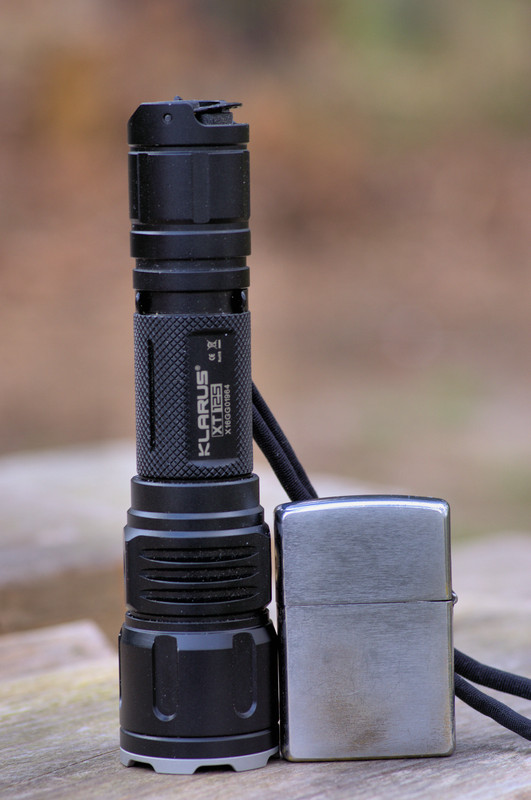
Klarus markets the XT12S as a tactical flashlight. In fact it has two operating programs: tactical and outdoors. Personally I have zero use for the tactical program, and haven’t used it for even one second in that program. I do find the outdoor program to be very practical though, as it offers several features that I really like, and use.
Instant access to low is one of those features; another is instant access to turbo mode. Both modes also have a temporary on feature – something that is far more useful that one would typically think.
There is no mode memory. It isn’t needed (IMO). The operating interface is intuitive and very simple – such is the case with the outdoor program anyway.
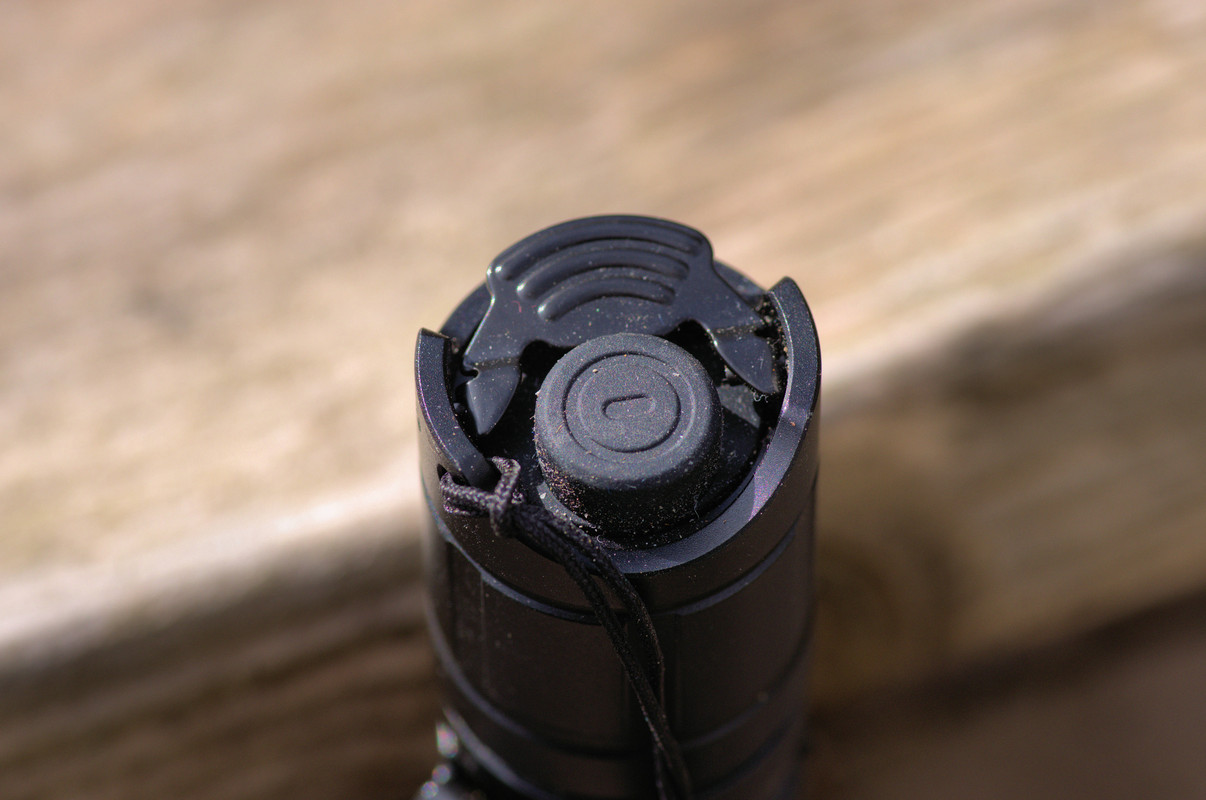
The tail cap has two switches: a regular button type switch (primary) and a second paddle type switch (mode switch). I love the arrangement – it’s easy to locate in pitch black conditions and easy to operate; simply press the desired switch by feel. Both switches give audible feedback when clicked (the primary switch is the louder of the two, but still very quiet) and good tactile feedback as well. I do own a few Klarus products with that switch arrangement and have yet to experience any issues. I find the switches very natural to use.
It will tail stand just fine; providing the surface is perfectly flat, there is no wind, and karma is with you. Outside of those conditions, it’s a meh. To be perfectly fair – that’s not the market the XT12S is targeting.
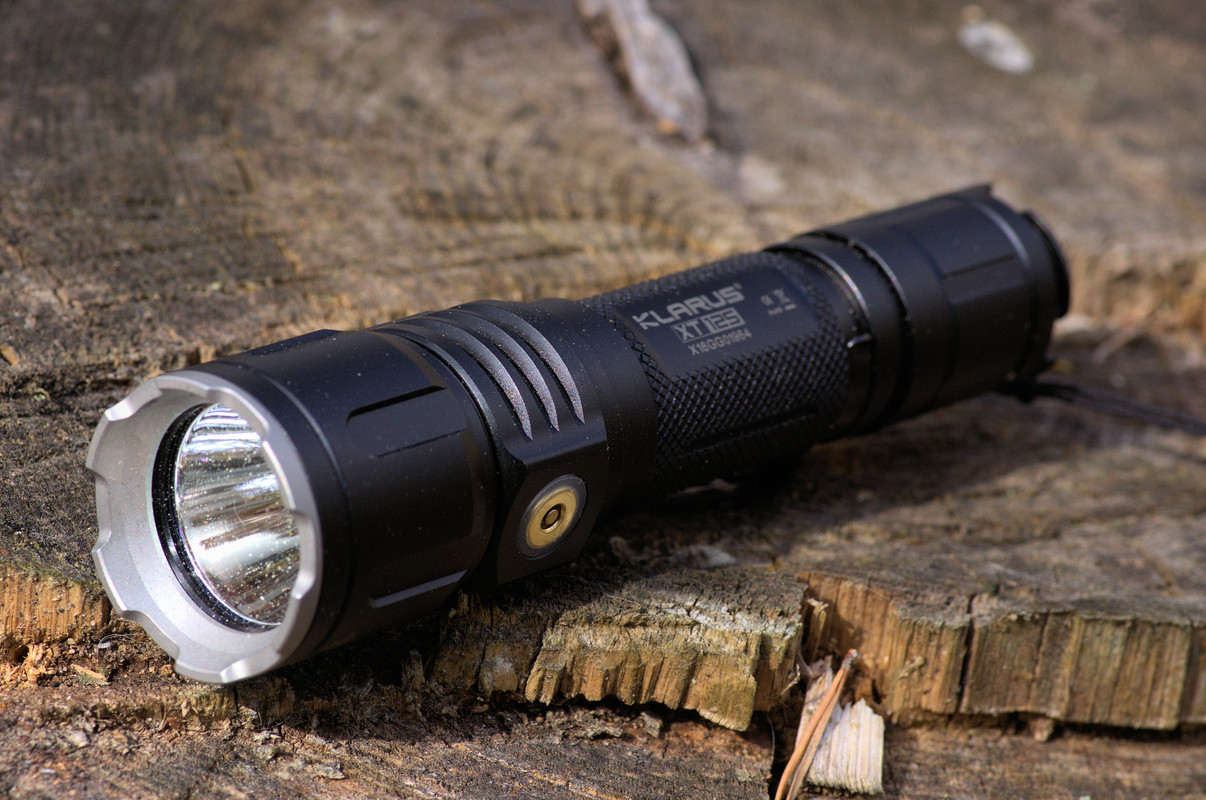
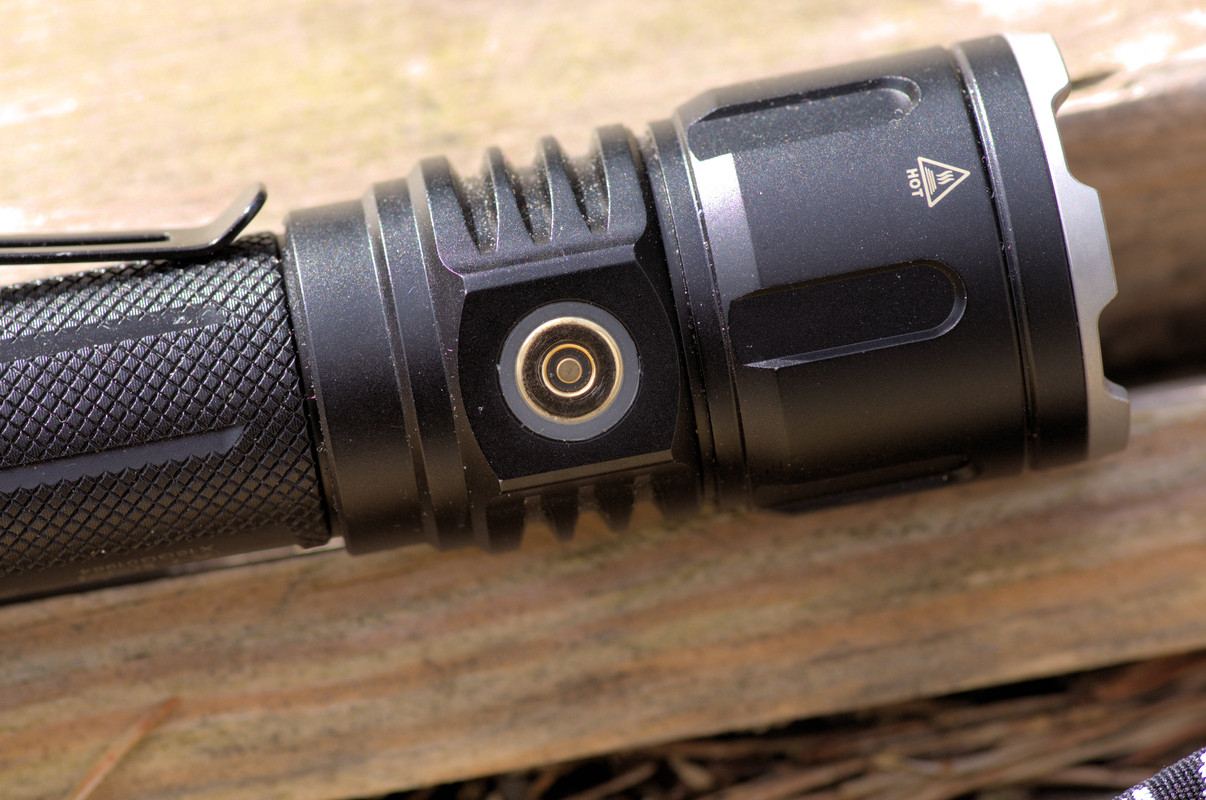
The build quality is very good, as is the finish. The XT12S offers excellent grip and the cooling fins do a very good job of keeping temperatures where they belong. This flashlight features magnetic charging – a big plus in my mind – and seems to charge in 3 – 4 hours from depletion. The battery status is given upon turning the flashlight on (flashing light around the charging port) – a very nice feature that can save the day if you pay attention. Opposite the charging port is a threaded hole for a tripod mount.
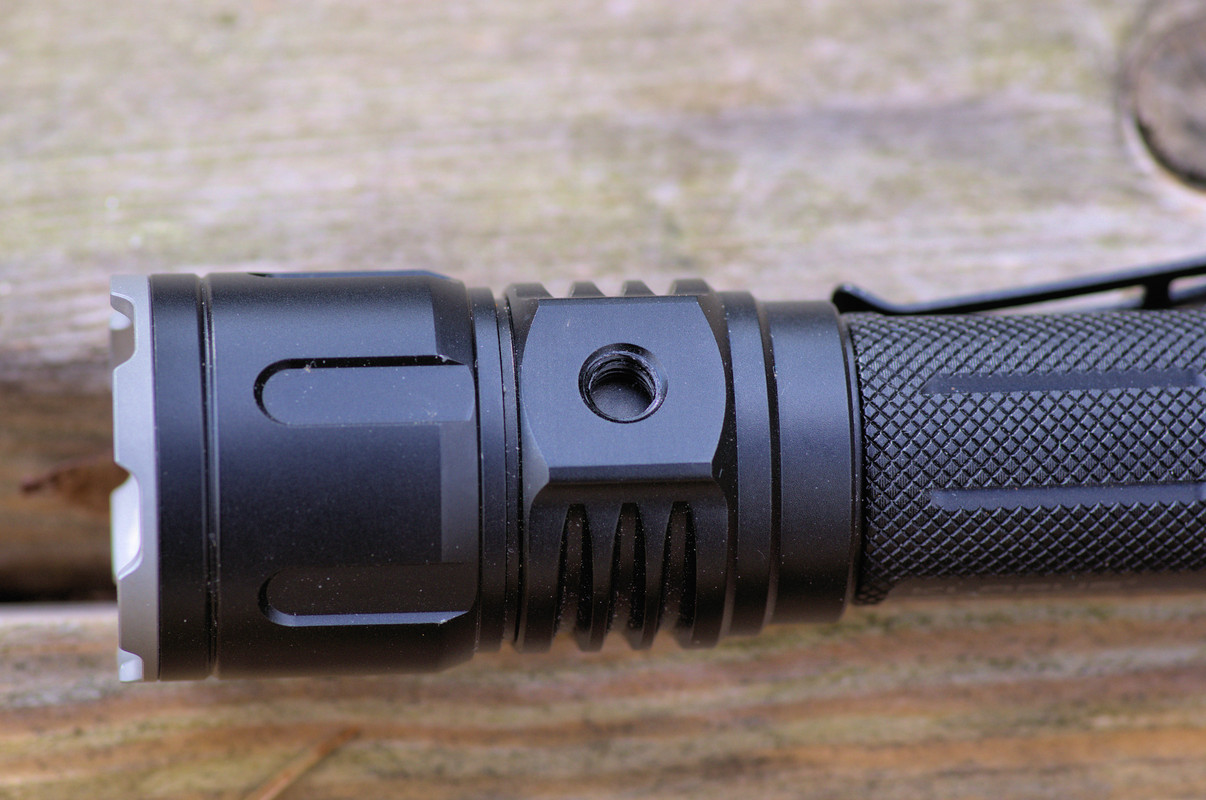
The tail cap is removable. Inside the cap is a stout spring, with another spring located at the head of the tube. The threads are square cut, not anodized, and lightly lubricated. The cap twists off/on without a hint of obstruction. The head is not designed to be removed by the owner.
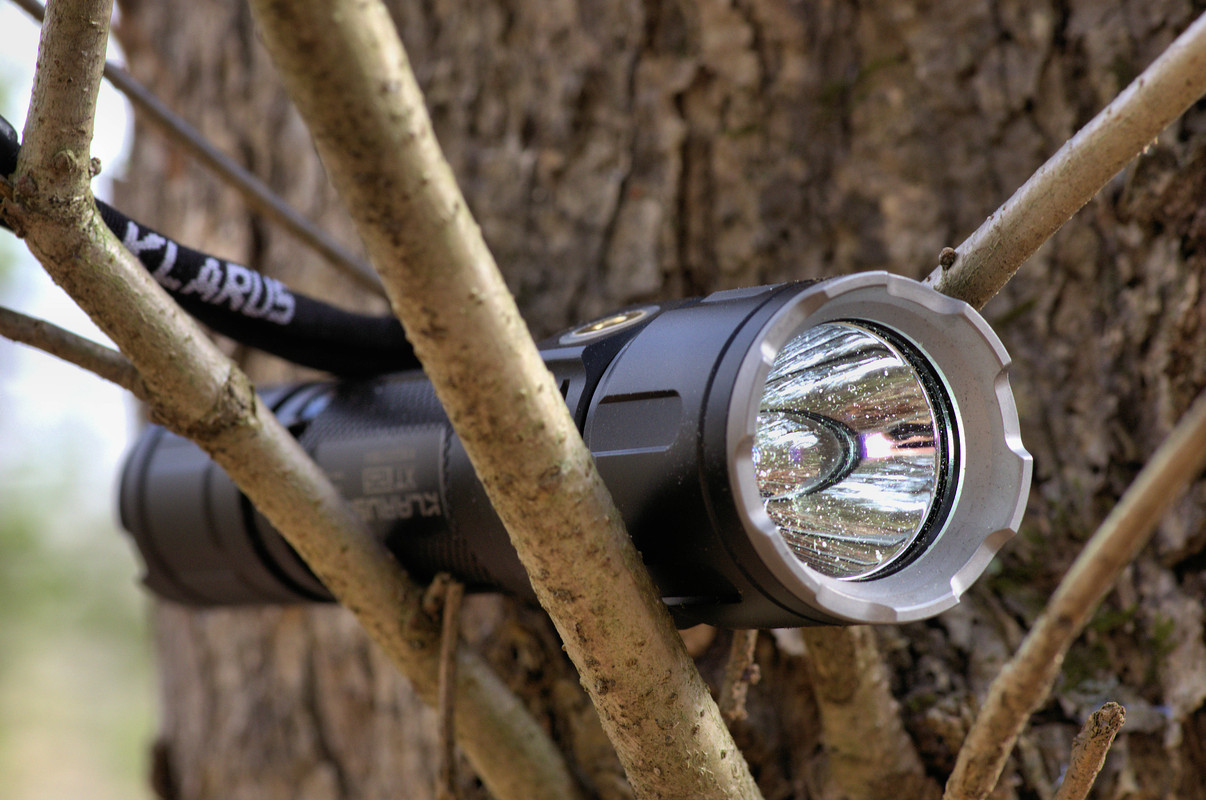
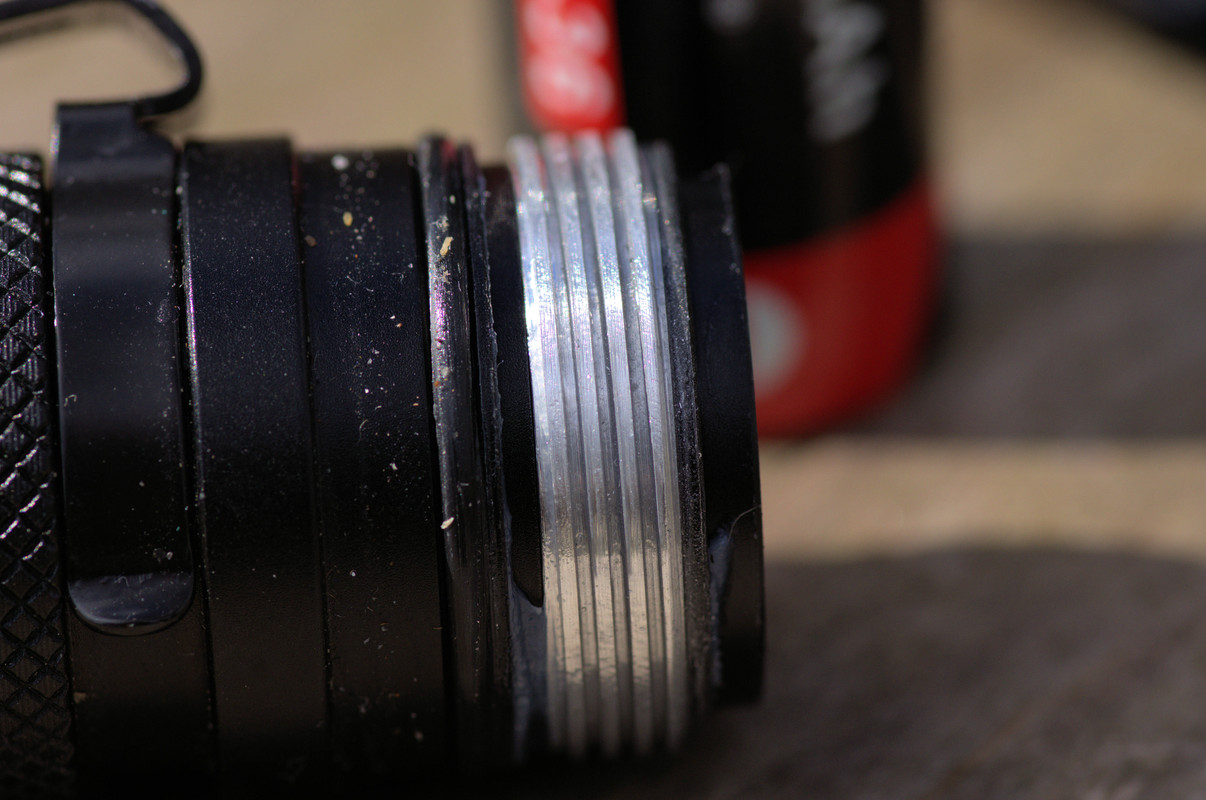
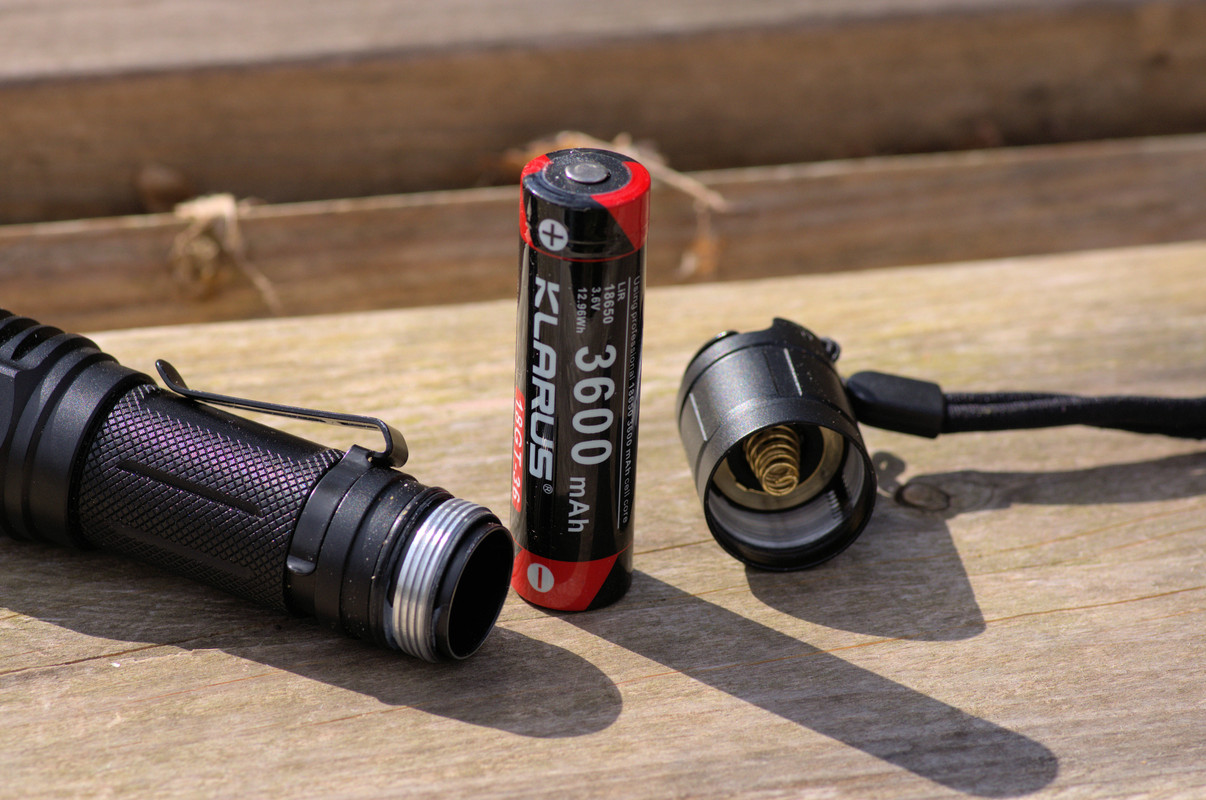
On the business end the lens is hardened glass with AR coating and scratch resistant. The crenelated bezel is stainless steel and can be removed without difficulty. The reflector is deep – for the size of the light – and appears to be made out of glass (I couldn’t find any specifications on the reflector).
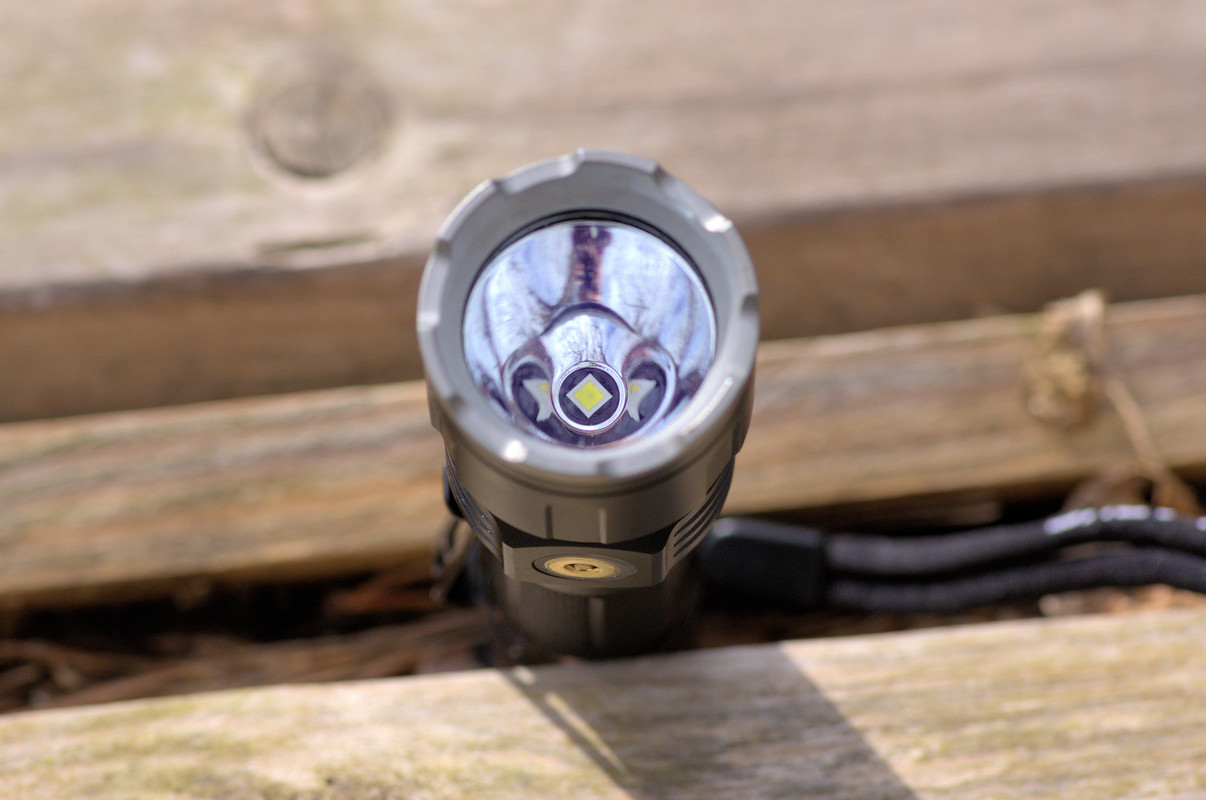
Klarus lists a maximum throw distance of 402 meters. Usable distance is less – probably somewhere around 220 meters. Still quite impressive for a light of this size.
The XT12S (Cree XPH35 HI D4 LED) puts out a lot of light (up to 1600 Lumens – according to Klarus). There’s a notation in the owner’s manual about that output – it’s achieved only with batteries that have an output that is the equivalent to the battery used for their testing. Other batteries may see an output that is limited to 1300 Lumens. I can’t say, for sure, how much light my XT12S puts out – 1600 Lumens seems quite possible though: based on the XT12S being noticeably brighter than other lights that are rated around 1200 Lumens. The difference isn’t great, but it is discernible.
The beam itself is a cool white (color temperature) and has a definite hot-spot in the center of the beam. Outside the center beam, the spill is much less intense but very effective. To my eyes there is no gradual fading from one to the other; the center beam is fairly tight and narrow and ends somewhat abruptly, with the outer beam taking over at that point and being much larger and less intense.
It makes for a very useful beam and provides very good peripheral vision.
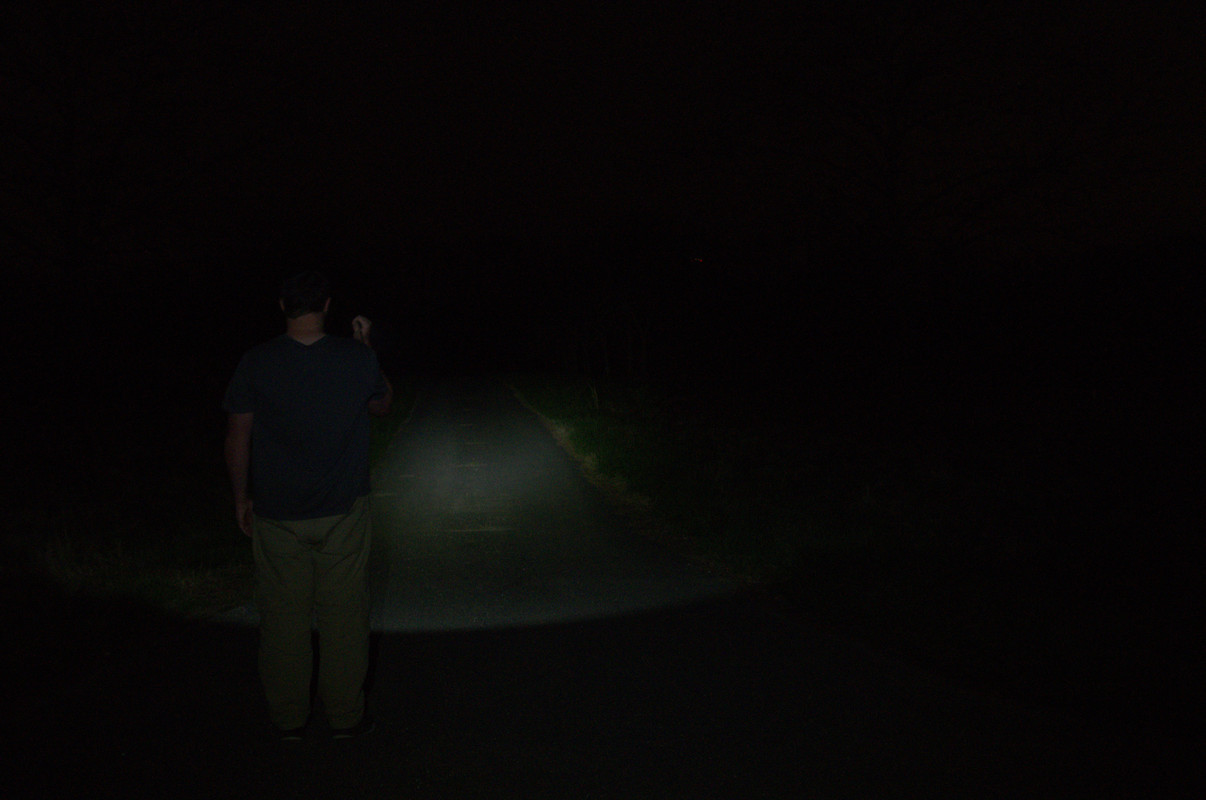
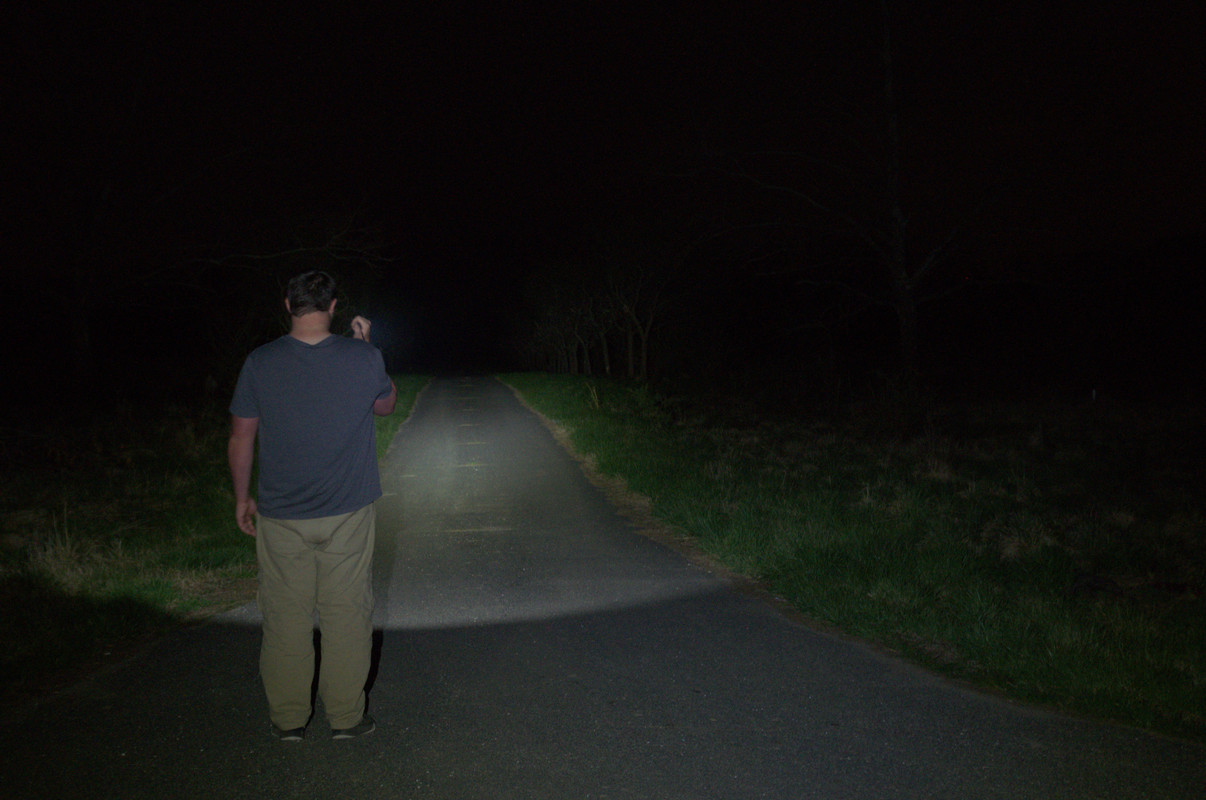
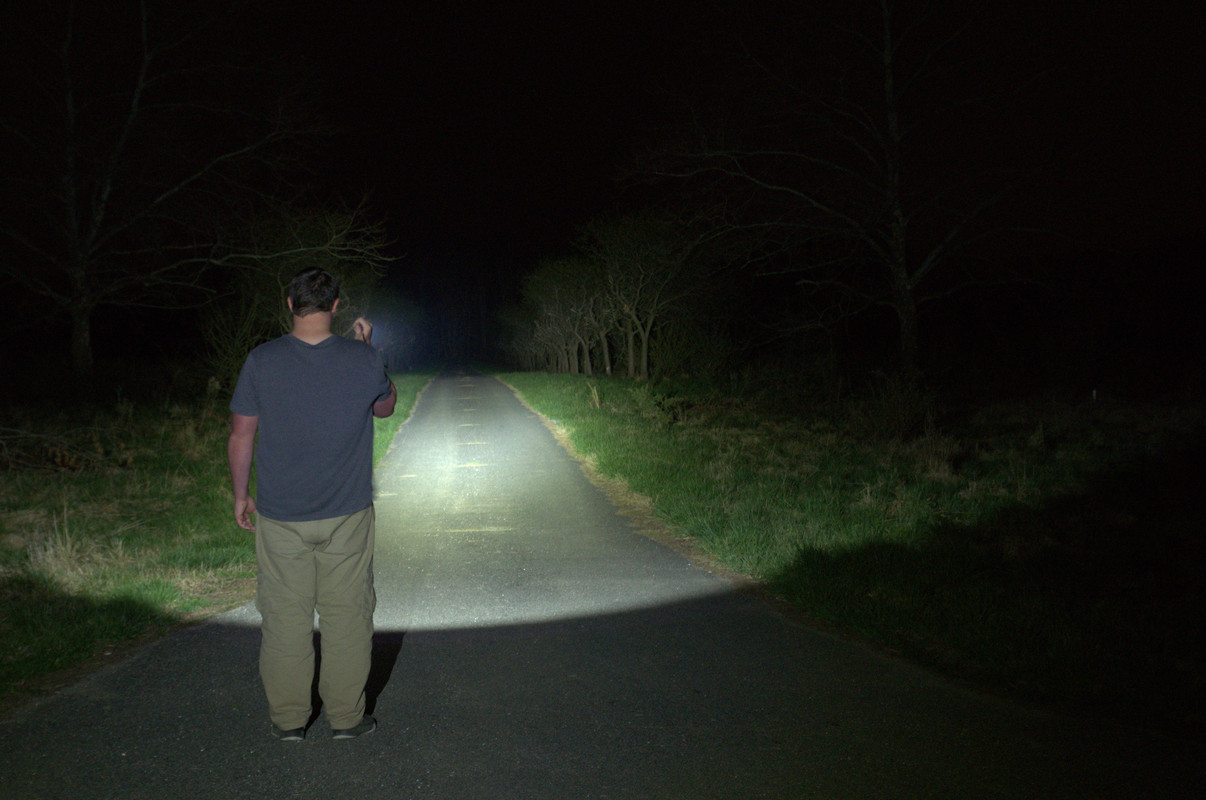
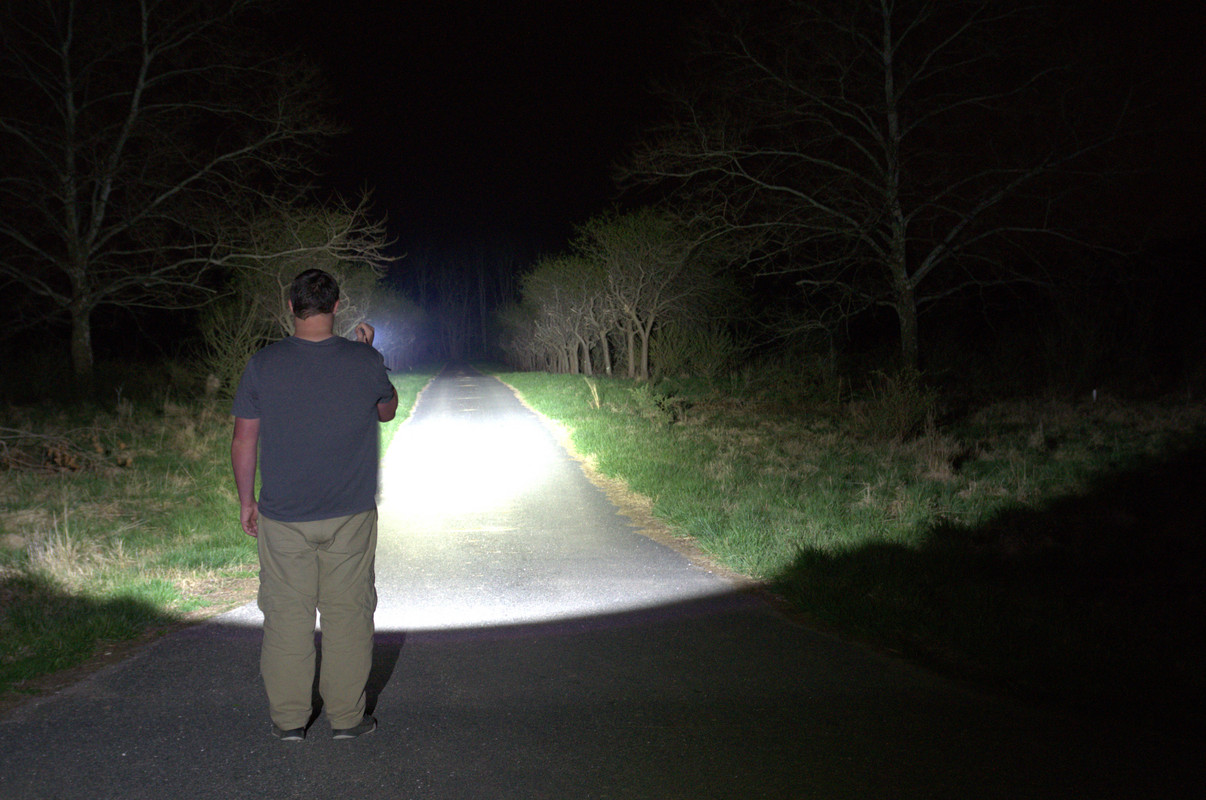
Note the trees at the end of the paved road. According to google maps, they’re about 235 meters away.
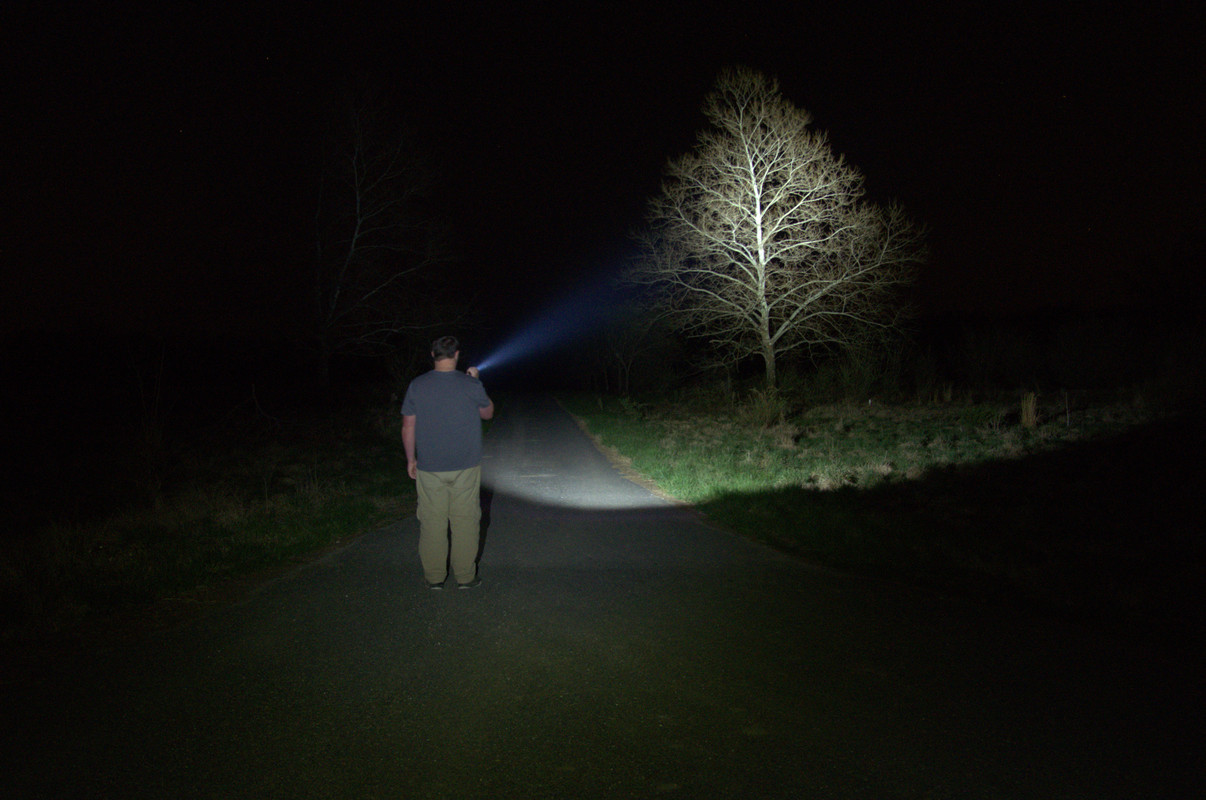
I think end use is an important factor to consider when buying a flashlight. I love the XT12GT for its ability to throw a beam of light way out there. It’s a great choice for spotlighting animals at night, and the light is among my favorites. But the XT12S is a much better choice for those more ordinary tasks, even if they’re a bit on the mundane side of things. In fact I end up using the XT12S far more than I do the XT12GT – simply because the beam is more appropriate for most chores and the XT12S is a bit smaller in size.
I have noticed that the XT12S will, when turbo mode is engaged, almost immediately decrease the output slightly. It is barely perceptible and seems to happen only when the battery level is nearing 70% (still flashing a green light when turned on – indicating a battery status of 70% or better). It has never done so on a full charge, and it is entirely possible that the two are not related. Still, I do not believe the occasional decrease in output has been related to the temperature of the flashlight – mostly because I’ve never noticed the flashlight being hot when that has happened. (the XT12S does feature a temperature control protection system)
Instead of writing out all the pertinent information (features, operation, etc…) that is found in the owner’s manual, I am providing a link to the manual itself, as well as a picture of the manual. Klarus did a good job of explaining everything, and I’ll stick to writing down my thoughts regarding the XT12S from Klarus.
Click photo, or this link, for a larger picture
When I’m evaluating a flashlight I try to read as much as I can about that item. That reading always includes the thoughts of others, typically reviews, if at all possible. I do so because I want to make sure I haven’t missed anything, and I want to double check if someone notes an issue they’ve had.
I did read a review, very well written and very detailed, that mentions an issue with PWM (with the XT12S). I am not into the technical aspect of flashlights. That side of the hobby just doesn’t appeal to me (I just can’t force myself to enjoy it). As a result, I leave the technical details to those who are far more knowledgeable than I am, and target my reviews toward those users who just want a flashlight that works when they need it to.
That said, I want to make the point that I am not challenging the person who authored that review. He – or possibly she – clearly knows far more about this stuff than I do.
But I did want to triple check my XT12S to see if I noticed the same thing.
First I had to figure out whether I knew what PWM was. My simplified definition was ‘noticeable flickering in the beam of light.’ I’ve purchased cheap lights that did have a noticeable flicker to the beam, and found it really irritating.
So I looked the definition up:
“Pulse Width Modulation. A technique of varying the brightness of a LED by flashing it on and off very quickly, making it appear to the eye that the LED is dimmer. Good PWM is at such a high rate that you can’t notice it. But if you wave your hand in front of the light and get a strobe effect, the PWM is getting too low. Some use current regulation which makes the light dimmer without PWM and is also more efficient.”
From Flashlightwiki
Close enough (to my understanding of the term) for me anyway.
And I checked, and checked, then checked some more. I tried waving my hand in front of the light. I tried shining it on a wall. I tried in each one of the four modes. I asked a couple of friends for their thoughts…
I can’t detect any hint of PWM in the XT12S I have. Neither could my friends. Now that could be because we just don’t know what we’re doing. Or it could be because my sample doesn’t have the issue. I don’t know one way or the other.
What I do know is that the XT12S has proved itself to be a very useful flashlight. It might have been designed with the tactical user in mind, but the average person will be well served too. The size is just right for carrying in a jacket/coat pocket, the output is very impressive, and the beam is a very nice blend of throw and flood (emphasis tilted toward throw a bit). It’s a great choice for those who just need a flashlight that covers ordinary tasks with ease. It’ll probably satisfy your inner Swat team member too, but I didn’t test that ability.
I did use the XT12S exactly as I’d use it had I purchased it – in rain, after a major storm, in the heat and in fairly cool temperatures. It has been tossed into my truck, rolled around, knocked off a bench, and loaned out to a neighbor. It still works as it should, and it still impresses others who see or use it. That makes it a winner in my opinion.
